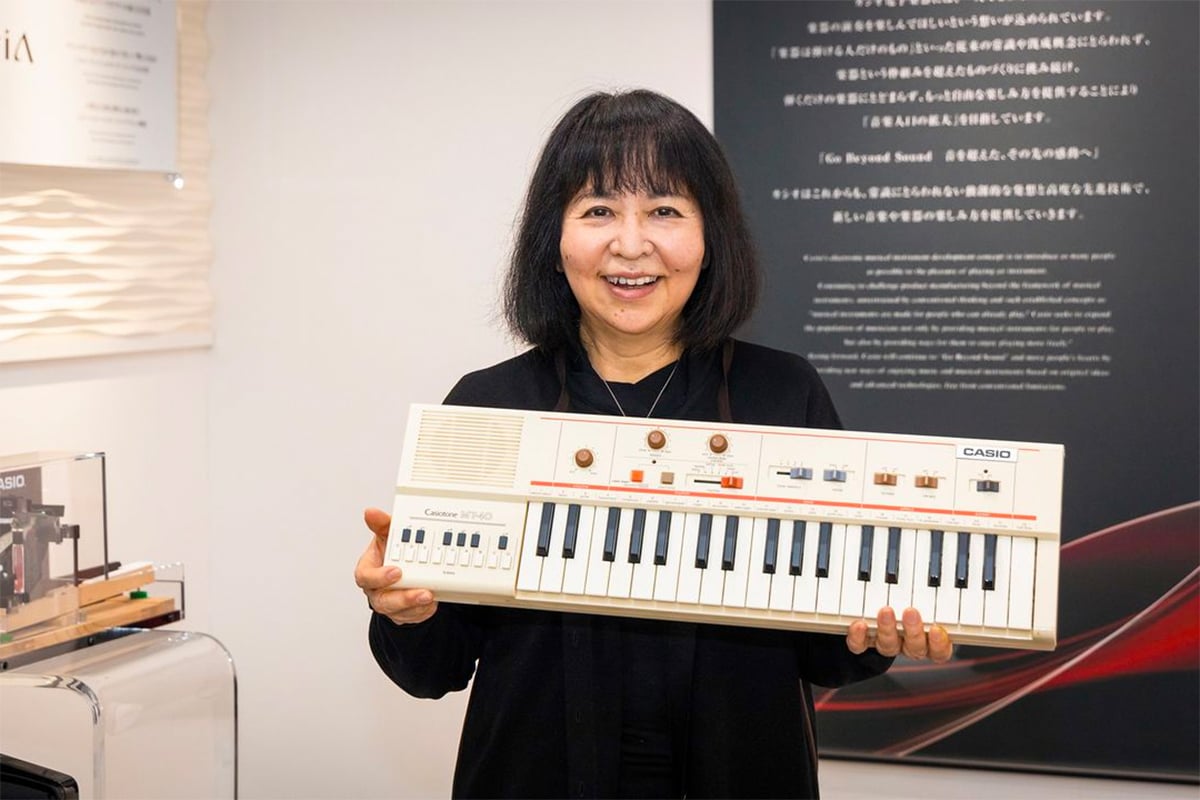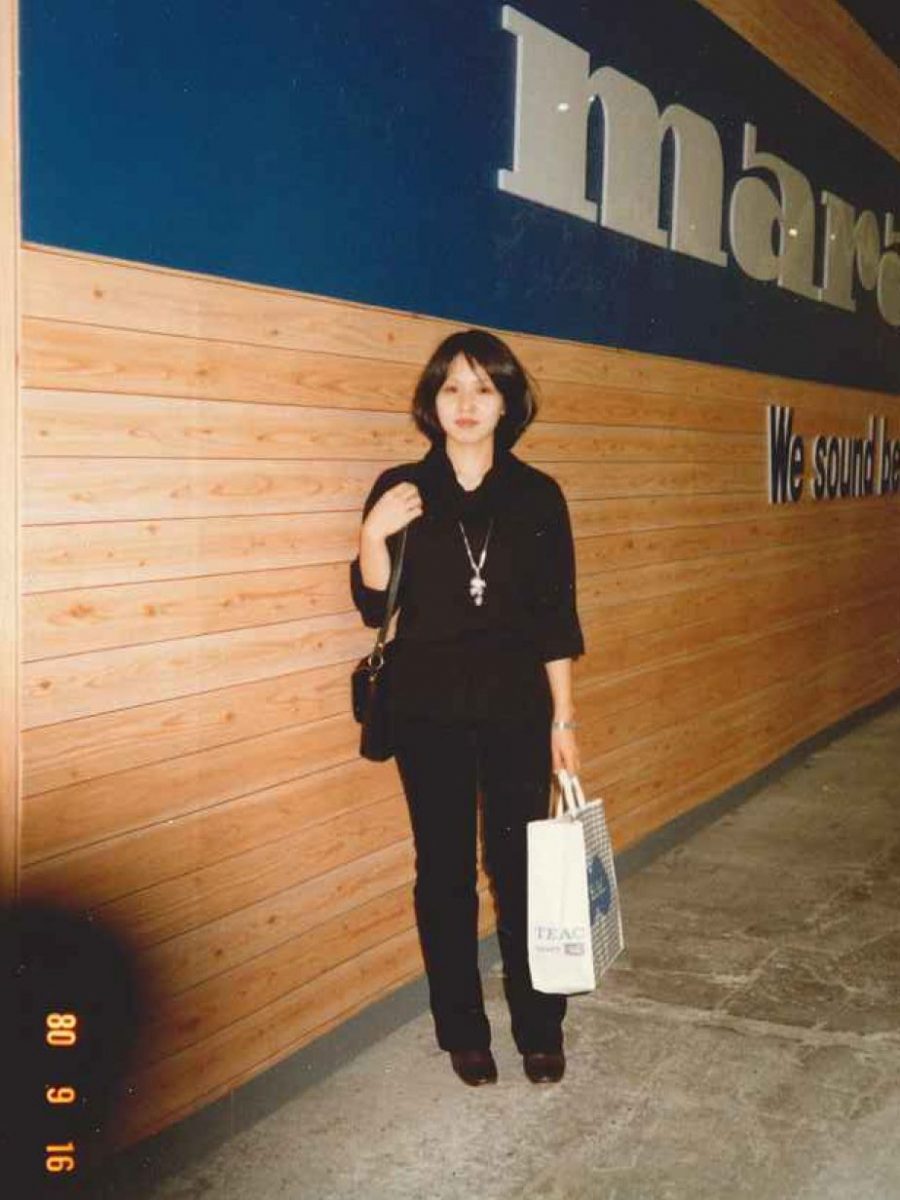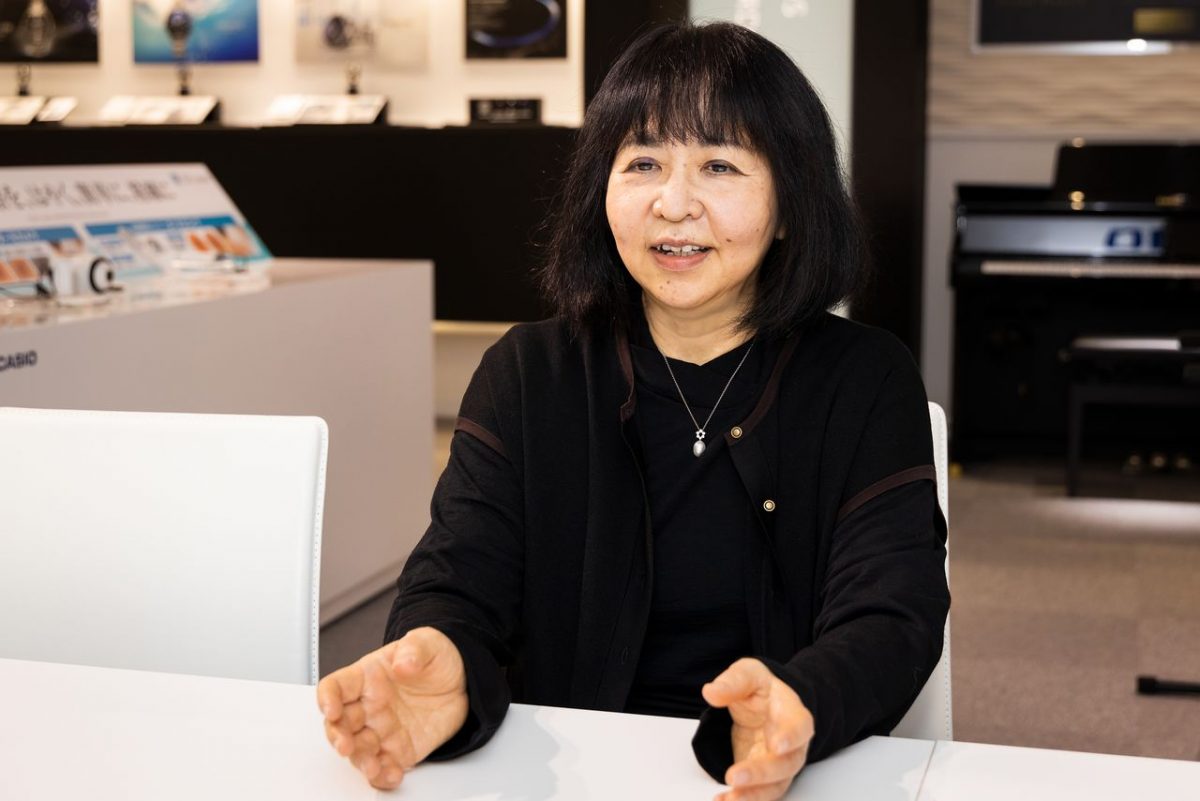Meet Okuda Hiroko: The Japanese Programmer Who Helped To Create Dancehall’s Pioneering ‘Sleng Teng’ Riddim

Okuda Hiroko, the Japanese woman who caught Reggaemylitis and created the Casio preset beat that gave rise to the legendary Sleng Teng riddim, believes that it was almost inevitable that the piece of music she composed almost 40 years ago would be embraced by Jamaicans.
The story has been long told of how a teenaged Wayne Smith, his friend Noel Davy, and producer King Jammy collaborated to transfigure the preset rhythm pattern programmed into the Casiotone MT-40 keyboard, released in 1981, and use it as the backbone for Smith’s revolutionary song Under Mi Sleng Teng .
However, very little was known of how a young Japanese developer, who, while only in her first year with Casio, and fresh out of college (where she had written a paper on Reggae as her graduation thesis), ended up creating the distinguished bassline.
In addition, the magnanimous response of the Japanese keyboard/calculator company Casio, to people who have constantly egged them to claim royalties for Sleng Teng, had only been known by a few. Casio has said consistently, that the keyboard and the accompanying beats are their gifts to music creators around the world, with the fundamental aim being to make it possible for everyone to experience the pleasure of playing a musical instrument.
The Japanese company’s response to queries for permission to use the preset beat, has been that: “the preset bassline is free for anyone to use: just credit the source and acknowledge that the tune uses a sound file taken from a Casio MT-40.”
The Sleng Teng riddim has the distinction of being a pioneering riddim for Dancehall’s digital age, being among the first entirely digitally produced riddims, for which no musicians were used to play instruments live in the studio. Sleng Teng is also one of the most re-recorded Jamaican riddims of all time, with more than 350 songs being laid on it. In addition, being able to ride the Sleng Teng riddim is considered the stuff of which Dancehall’s greatest deejays are made.
In what was her first interview 40 years after the keyboard was made, Okuda told the Nippon Communications Foundation that the trajectory of the Sleng Teng beat was “wasn’t a total accident”, but to her feels “almost inevitable”, and for that, she is extremely happy.
“That the rhythm I made for the MT-40 spread around the world and is still loved today by so many people is one of the great joys of my life. It’s right up there with the happiness I felt when my children were born. In musical terms, I’ve never been able to top that first child!” she said.

According to the article, Okyda joined Casio straight out of the Kunitachi College of Music, three months after the company launched the Casiotone 201 keyboard with an inbuilt speaker, in January 1980. At that time, the company decided to branch out from making strictly calculators, into the musical instruments business.
“As soon as she completed her initial training, she was set to work on preset backing tracks for the MT-40. Casio wanted to develop instruments that would be capable of providing an automated accompaniment to musical performances. As a stop-gap measure, the company decided to release mini-keyboards programed with preset rhythm tracks as a steppingstone toward this target,” the article noted.
When she joined Casio’s development department, Oduka was one of only four new college graduates with a musical background there. However, she was the only one who knew anything about popular music, as “everyone else had studied classical music”.
Okuda, who had played piano since childhood and later fell in love with Reggae, which she described as comprised of lyrics with “a strong social and political message”, but were performed in a “light, breezy style” a clear contrast to the other music genres, such as rock, which she liked.
Interestingly, the Japanese have been enraptured with Reggae, since Bob Marley toured the country in 1979, which decades later gave rise to the establishment of a homegrown scene where more than 300 reggae groups or sound systems are now based.
Okuda had explained that in college she specialized in general music studies, studying music history and sociology alongside theory as well as “the harmony that forms the foundations of all musical compositions”.
“However, the real focus of her studies was reggae, which made her a rarity in Japanese music colleges, back then, where almost all students specialized in classical music,” the article stated.
Reggae for College Thesis
“Even my graduation thesis was on Reggae. There was no one on the faculty with the background to advise my thesis, so in the end they got a specialist in baroque music to read it. The professor read it through and said, ‘Well, it seems to be put together well enough.’ And that was enough to allow me to graduate!” she had explained.
Oduka was among the thousands of Japanese who went to see Bob Marley make several performances during his Babylon By Bus tour, which kickstarted in Japan in 1979, when she, incidentally, was working on finishing up her thesis.
An advertisement posted on campus by Casio, shortly after Bob Marley’s concert series, seeking graduates from music colleges for the first time caught her attention and she applied.
During her interview for the Casio job, Oduka was given a demonstration of the new Casio keyboards, which were not yet put on the market.
While she was impressed their quality, “and the potential of electric instruments”, she chose to work at Casio, fundamentally, due to the global vision, of Kashio Toshio, the second oldest of the four Kashio brothers who founded the company, and whose desire was to “bring the pleasure of playing a musical instrument to everyone”.
Shortly after joining Casio, Okuda was tasked to create samples for use as preset backing tracks on the new keyboards, where she created rhythm patterns for six different genres of music, including “rock,” “pop,” and “samba” styles and bass lines for each style.
What later became the Sleng Teng riddim was originally intended to be a “rock” rhythm, but according to her Reggae had taken over her musical subconsciousness so that even though she did not have Reggae as her focus in mind particularly when she came up with the bassline, she did try to create a sample that would be easy to toast (deejay) over.
“In those days, my head was full of Reggae. Even when I was trying to come up with a rock beat, I think it just naturally came out as something that would work in reggae as well,” she explained.
Since there were many constraints in terms of the types of sounds and number of notes that could be used, and the preset patterns could only use drum and bass sounds as well as limited to a length of two bars, Okuda, as a programmer, could not add much variety to the drum sound, and so her main focus was centered on the construction of the bass line.

According to her, she tried not to overcomplicate the bassline by adding too many notes, in order to make it easy for musicians to develop their own arrangements, as well as make it “suited to the characteristic off-beat chords of reggae-influenced styles of music”.
Casio’s new musical instrument business got off to a flying start when the new keyboards were released, racking up huge global sales, while Oduka went about her other business.
It was while reading the August 1986 edition of Japan’s Music Magazine that she came across an article with the title “The Sleng Teng Flood,” which described how a Casiotone preset rhythm was taking Jamaican music by storm, that she realised that the preset-beat spoken of, was the one she had composed for the Casiotone keyboard.
Pleasantly surprised, she immediately went out and bought a copy of the album Under Mi Sleng Teng.
“There it was, loud and clear: It was definitely the preset rhythm part from the Casiotone. I’d sort of been prepared for it, but even so, I was surprised to find that the intro to the song even used the fill-in preset we’d programmed into the keyboards,” she recounted.
“At the time I came up with the part, I was listening to reggae all the time, and had even written my graduation thesis on the music. And now people in Jamaica, where the music was a part of people’s daily lives, had discovered my rhythm and taken it on board as part of their music. It had happened because Casio was an export-oriented company that had started to develop musical instruments, and had been bold enough to give a new employee like me, straight out of college, the responsibility for coming up with these parts. In that sense, it wasn’t a total accident. In a way, it felt almost inevitable,” she said.
“If I can give back even a little bit of what reggae has given me over the years, nothing could make me happier,” she added.
